A ride on the wild side: discovering the Meuse Cycle Route’s biodiversity hotspots
The presence of natural conservation areas, many of which are included in the Natura 2000 Network, protect the unique biodiversity along the River Meuse, hosting habitats to endangered species. Cycling is one of the best ways to explore the magnificent nature along this mighty river.
Lorraine Regional Nature Park - Top pick for ponds and plums
When starting the EuroVelo 19-Meuse Cycle Route in France, the route follows the edge of the Regional Natural Park of Lorraine, which delights numerous visitors every year with 219,400 hectares of breathtaking landscapes, more than 300 ponds and the internationally renowned wetlands "Lakes of the Small Woëvre" and the "Great Lake Lindre". The park's unique natural heritage is a biodiversity hotspot, which has led to its classification as a Natura 2000 site.
Are you an ornithologist or would you like to learn the art of birdwatching? Perfect! Because the park's streams, tributaries and wetlands are important habitats for numerous highly endangered bird species. The curlew, corncrake and whinchat are rare today, but can still be observed at seven observation stations and three observation trails in the Lorraine Regional Nature Park. For a snack in between, the Meuse hills with its orchards invite you to linger. Besides apples, pears and cherries, the fruit of the Lorraine mirabelle plum stands out in particular. The so-called ‘gold’ of the region is a real feast for the eyes when it blossoms in early spring and captivates with its sweet and sour taste in late summer.
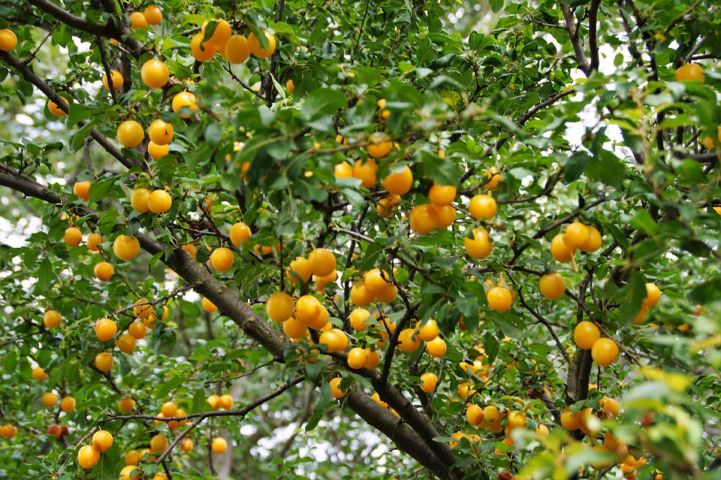
Regional Nature Park of the Ardennes - Contrast of forests and rocks
In the north of France on the border with Belgium, EuroVelo 19 winds through the lush green forests and wide arable fields, past steep rocky slopes and peat bogs of the Ardennes Regional Nature Park. From the steep cliffs of the nature park, you can admire the area from a different angle and see where the Meuse has carved its traces like a pulsating green vein. The river hosts a rich ecological diversity and gives a home to animals like the kingfisher or the mountain newt. The ancient rocky area, which is over 500 million years old, and the vast forests provide shelter for numerous orchids and the sundew. For action lovers, the trail down the rocks can be taken on one of the 22 marked mountain bike trails. Moreover, the natural beauty of the park can be enjoyed when horse-back riding, fishing or canoeing.
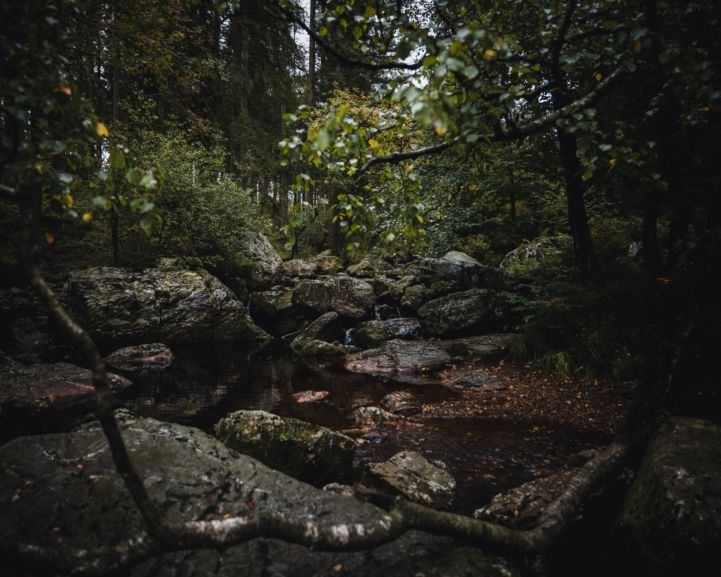
Hoge Kempen National Park - In the purple fields of heather
In Limburg, the "greenest province" of Flanders, the Meuse Cycle Route passes only 5km from Belgium's first national park, National Park Hoge Kempen. This former industrial area has been a national park since 2006 and was opened with the aim of preventing the loss of biodiversity. Today, it offers a variety of natural beauty: vast pine forests, purple flowering heather, bodies of water from where sand and gravel were once quarried and the park's 100m high "peaks" from which the natural glory of the park can be admired. The heather in particular attracts a wide variety of bird species and the many lakes provide a home for amphibians such as the moor frog, natterjack toad and sand lizard. An encounter with roe deer is not uncommon either, and in the sunniest parts of the national park you may almost stumble across the harmless smooth snake.
You can enter the national park through five gates and explore the park by bike on a network of junctions for cyclists and horse riders, or have a ranger show you around.
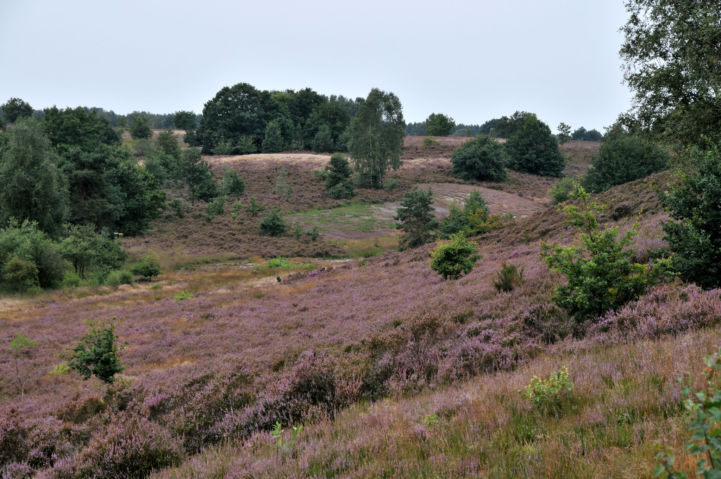
Rivierpark Maasvallei - Home of beavers and birds
Biodiversity doesn’t understand of political borders and many habitats and ecosystems spread in more than one country. On the border between Belgian and Dutch Limburg, EuroVelo 19 runs along a place where the local biodiversity has been celebrated for many years. A project called "Maasvallei" has been offering the synergy between nature & landscape, tourism & recreation and education & awareness since 2005. The park is one of the largest and most successful ecological river restoration projects in Europe.
The Rivierpark Maasvallei would not be what it is today without the Meuse, the main artery of the park. Its banks are home to plants and animals that cannot be found anywhere else: water birds, butterflies, dragonflies, wild bees and exceptional flowers. If you are lucky, you may even see the beaver building its dam.
The Rivierpark offers a large network of cycle routes to explore the area along the river. For a change of scenery, the Meuse can also be crossed by ferry at various points.
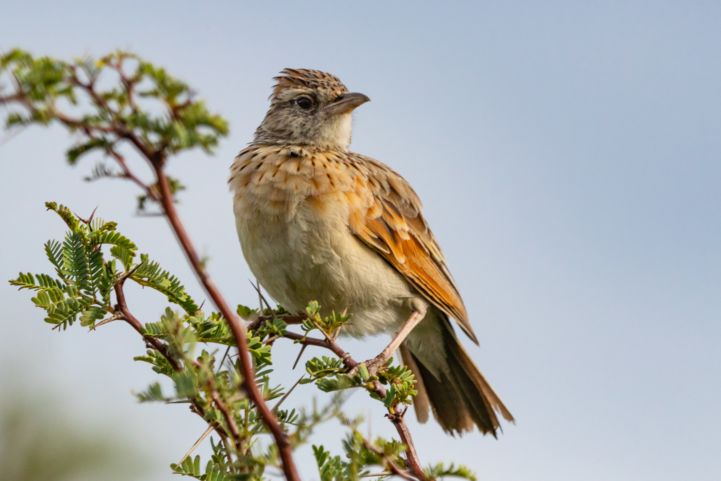
National Park De Maasduinen - In the vastness of the dunes
If you continue to follow the Meuse at the Netherlands, you will come to National Park De Maasduinen, which stretches along the German border. It is the longest river dune belt in the Netherlands and owes its name to the striking parabolic dunes - horseshoe-shaped dunes that were formed towards the end of the last Ice Age. The largest standing body of water is the Reindersmeer, which may not be used for recreational activities and is left entirely to natural development.
As the crane is a rarely sighted bird that stops in the park's moorlands on its migratory journey south, it has been integrated into the national park's logo. Another rare species is the endangered bell gentian, whose unopened flowers are used to lay the eggs of the Gentian Blue, a butterfly.
If you want to spend more time in this fascinating area, you can pitch your tent at one of the several natural campsites.
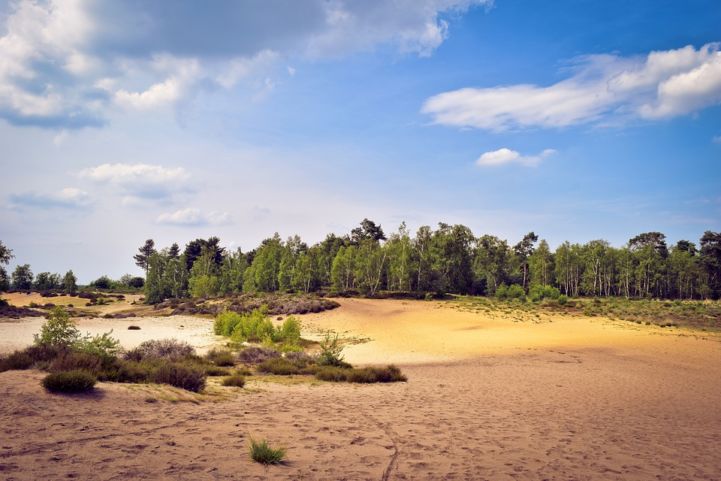
Author: Antonia Tornow